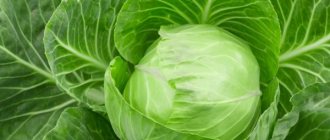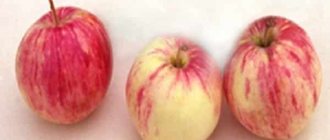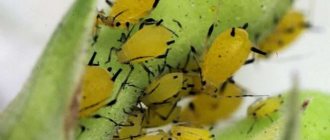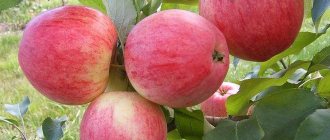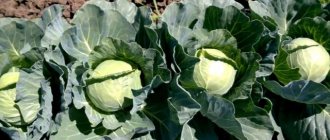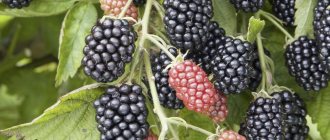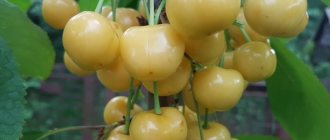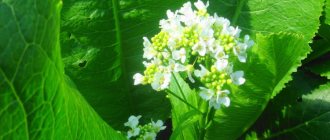Spiraea viburnum: description, varieties
Spiraea viburnum grows in the wild along the banks of rivers in North America. The name of the plant translated from Greek means spiral. They probably meant spirea branches, because the flowers don’t look anything like it. There are different opinions regarding the names bladderwort and meadowsweet. Some sources believe that these are different plants.
Spiraea viburnum is a shrub of the rose family up to 3-4 m high.
The bush is spreading, the shape of the crown is spherical. There are a large number of branches, they droop and make the bush dense. The bark is yellow and peels off on old branches.
The leaves are relatively small, 3-5 lobed, with small teeth, up to 7 cm in size. They are a little similar to the leaves of the common viburnum, as its name suggests. The color of the leaves depends on the variety and can be almost any possible: from light green, yellowish, to burgundy, scarlet, orange. In winter, spirea sheds its leaves.
Varieties of spirea viburnum:
- Diabolo with burgundy foliage that turns yellow in autumn. The flowers are red, from a distance they look like bunches of viburnum. The leaves can be dark green in the shade, turning golden yellow in the fall.
- Luteus (Mod) with leaves, yellow in spring, green in summer. The height of the bush is 2.5 m. This is a hybrid obtained from the Diabolo variety.
- Red Baron is 50 cm tall with beautiful ruffled leaves and pink flowers.
- Darts Gold with bright yellow leaves and pink flowers. By autumn its foliage turns orange.
- Summer Vine with dark cherry leaves and lots of pink and white flowers. The length of the branches is only 50 cm. The variety was created by crossing the Diabolo and Nanus varieties (a variety that is not particularly noticeable).
- Coppertine is a hybrid variety with orange leaves.
- Andre with bright red apical and burgundy lower leaves.
- Lady in Red with burgundy leaves and pink flowers. The height of the bush is up to one and a half meters.
- Angel Gold with light leaves with a reddish tint.
Diabolo d'Or differs from the mother one in that the apical leaves are lighter in color. From a distance it seems that the bush is glowing.
Spiraea viburnum blooms at the end of June. During this period, the bush is covered with large umbrella inflorescences up to 5 cm in diameter with small flowers, white or pink. The diameter of the flower is only 1 cm. The stamens are red-brown and large. They are the ones who make the inflorescence fluffy. The bush blooms for three weeks. By autumn, red fruits appear in place of the flowers. Over time, they acquire a brown tint. The fruits are bubble-shaped leaflets that burst when pressed, making a popping sound. Children really like this, and they enjoy playing with the spirea fruits. The bush looks very decorative all year round: in summer, during flowering, in autumn and winter.
The wood is strong, moderately resistant, yellowish, without a core. Tree rings are clearly visible. Spiraea viburnum has been growing for about 50 years. Therefore, having planted it on the site, you can spend several decades not worrying about how to decorate it in order to make it noticeable.
2.Description
Spiraea or meadowsweet is a flowering deciduous shrub that comes in a variety of shapes and sizes. The genus includes about 100 plant species.
All shrubs have abundantly branching, erect or lodging shoots , which become lignified with age and become covered with brown, flaking bark.
The leaves are simple, colored in different shades of green, with a glossy surface, arranged on short petioles alternately. The edges of the leaf blades have small teeth.
The flowers are very small - often reaching only 1 - 2 cm in diameter, but are collected in very numerous inflorescences of various shapes. On shrubs you can find inflorescences - panicles, umbrellas, corymbs, brushes.
The buds are often painted white, red or pinkish and have 5 round petals and numerous stamens. During the flowering period, the inflorescences are often completely hidden by the branches and leaves of the plants.
During the fall months, the leaves turn vibrant burgundy and reddish shades.
Currently, numerous variegated or variegated varieties with leaf blades, painted in different shades and with stripes of different shapes on the surface, have been developed.
↑ Up,
Height . Depending on the specific species, the height of the plant can range from 30 cm to 2.5 m.
Growing conditions and application
Spiraea viburnum is undemanding to soil. But on fertile, slightly acidic or neutral soils it feels better. Does not tolerate stagnant moisture near the roots. Therefore, it needs to be planted in places where groundwater does not come too close. If there is no other place, provide high-quality drainage. Spiraea does not like calcareous soils. It is better not to plant it on them, because there it will be weak and will soon dry out.
Spiraea viburnum grows well in illuminated places - there it blooms more luxuriantly and brightly.
In the shade, spirea leaves lose their decorative effect. Tolerates partial shade well. Spiraea is resistant to low temperatures, but there is information that in particularly cold winters it can freeze. In this case, the bush is pruned, over the summer it grows back and looks beautiful. Most likely the young bush is afraid of the cold. Gardeners say that an adult can tolerate temperatures up to 40 degrees below zero.
Spiraea viburnum is not afraid of strong cold winds, smoke and gas pollution in a big city. Therefore, it can be planted in city parks and squares. Suitable for landscaping wastelands due to its unpretentiousness and resistance to diseases and pests.
- Spiraea viburnum is used to form hedges, planted in groups, in solitary or mixed plantings. Hedges usually have strict geometric shapes.
- Looks good near coniferous species: spruce, pine, fir.
- In order to create a bright group in a park or garden, you need to take into account the color of the leaves of different varieties of Spiraea viburnum. By pruning the bushes into different shapes (cone, ball, pyramid or a combination of these shapes), you can create original compositions.
Spiraea viburnum practically does not suffer from anything and is not damaged by pests. This makes it even more in demand for landscape designers.
Spiraea is considered a good honey plant. Near its plantings you can install hives with bees. The wood can be easily processed and polished, but due to its small diameter it has no industrial significance. It is only suitable for making small crafts.
Spiraea rowan leaf (Sorbaria sorbifolia)
Another ornamental plant that claims to be called rowan-leaved spirea is fieldfare, an indigenous inhabitant of Siberia and the Far East, cultivated today from the northern border of the forest zone of Russia to the steppes. Confusion in the classification is caused by the external similarity of fieldfare and some species of spirea, as well as their common membership in the Rosaceae family. However, fieldfare belongs to a different genus than spirea, but this does not make it a less attractive and interesting plant, reaching a height of 3 meters in 4 years.
A large shrub that lives up to 20 years has erect branches with brownish-gray bark, forming a dense spherical crown. The leaves are really similar to the foliage of rowan, but more pointed. And young foliage, which is one of the first to appear in the garden, is often purple in color. In July, white fragrant flowers collected in pyramidal paniculate inflorescences, up to 20–25 cm long, open abundantly.
Video about Spirea Gold Mound
Reproduction and planting
Spiraea can be grown from seeds, but there is no guarantee that the plant will have the properties of the mother plant. Spiraea of different varieties crosses well with each other. Thus, the Diabolo variety, when crossed with varieties that have yellow leaves, produces plants with crimson or scarlet leaves.
You can propagate a spirea bush by dividing the bush, layering or cuttings:
- It is better to divide the bush in the spring. Cut it into several parts with a sharp knife or shovel. Plant separately, watering well until rooting. Then you need to dig several branches for layering to a depth of 15 cm. Leaves that go underground are torn off. Pin with a wooden fork and cover with earth. Water periodically, making sure that the soil above the layerings does not dry out. In the fall, after the cuttings take root, they are separated from the mother bush by cutting a branch closer to the bush. They are covered for the winter, and in the spring they are planted in a permanent place.
- It is a little more difficult to grow spirea from cuttings. To do this, in the summer, a non-lignified cutting is cut and treated with a stimulant that promotes the formation of roots. Planted in coarse sand or sand with peat. They are building him a greenhouse. This could be a piece of film or a plastic bottle without a bottom. By opening the cork, the cuttings are ventilated. They are covered for the winter, and in the spring they are planted in a permanent place.
In order to acquire a certain variety of spirea, it is best to buy a seedling in a container. This will allow you to prepare a place for the plant and plant it at any time except winter. The seedling must be at least 30 cm in height and have 7-8 shoots.
Rules for planting shrubs:
- The depth of the hole may not be very deep, up to half a meter, because the roots of Spiraea viburnum penetrate shallowly.
- Drainage is prepared at the bottom, garden soil mixed with humus and peat is poured out.
- The seedling is carefully removed from the pot and placed in the prepared hole. Make sure that the lump of earth is not damaged in the process.
- The bush is buried 5 cm deep. This will force dormant points to wake up and grow.
- Water with Kornevin's solution, which will help the plant to quickly take root.
If the seedling was purchased with an open root system, it is planted in early spring or autumn, in September. The roots are carefully straightened and sprinkled with prepared soil. Water at least once a week until the plant takes root. After planting, the spirea bush is mulched with peat or a thick layer of mowed grass so that the soil under the bush does not dry out. Periodically loosen the soil around the seedling (after watering) and remove weeds.
Landing
Due to the unpretentiousness of the rowan-leaved spirea itself, planting will not cause difficulties if you are careful when choosing seedlings and preparing them. The process itself is not labor-intensive, takes little time and does not require special skills from the gardener. It is best to plant shrubs in early autumn - in September. This is due to possible bad weather, which has a beneficial effect on the growth rate of the plant due to strong moisture.
Preparation of seedlings
If you just decide to start growing rowan-leaved spirea, you will have to buy seedlings. Before purchasing, pay attention to the plant being sold: the roots should not be too dry. The main sign of good shoots is their flexibility and the quality of the sprouted buds.
If after purchasing you find that the roots have grown too much, use garden shears to trim them. It happens that, on the contrary, the rhizome is damaged or dried out - then wash it, leave it in a bucket of water and cut the stem itself before planting.
Soil preparation
In the area where shrubs will grow in the future, it is necessary to dig a neat hole with strictly perpendicular walls. Its depth and width should be at least a third greater than the spirea root system.
For planting, choose rainy or at least cloudy weather. In the hole, first create a drainage layer that will occupy the excess pre-dug depth. The easiest way to make such a layer is from waste building materials, for example, broken bricks.
How to plant
After creating a drainage layer, it is advisable to add turf soil, sandy soil and peat to fertilize and increase the growth rate of spirea. Next, simply lower the roots of the bush into the hole. Carefully lay them out and cover them with soil. It is noteworthy that it is better to plant the plant before or during leaf fall: fallen leaves will protect the fragile shrub from frost and will fertilize it in the cold season.
Although rowan-leaved spirea is not a whimsical plant, it still requires some care. For active growth and subsequent survival of the plant, it is necessary to water and feed it on time.
To improve its decorative properties and appearance, you need to trim it in a timely manner. Keep in mind that summer-blooming spirea varieties will not live long without pruning: all the vitality will be transferred to the tall stems, depriving the roots of the nutrients they need.
Watering and fertilizing
It is necessary to regularly water the bush only at first after planting. Also, this need appears only in extremely dry weather. For a plant to exist comfortably, it needs only 15 liters of water for two weeks, provided that the current season is summer. In rainy weather, it is better to refuse watering in order to protect the shrub from the possible beginning of the process of rotting of the rhizome.
For lush flowering, gardeners use nitrogen-based fertilizers. For rowan spirea, supplements are often used that contain phosphorus and potassium, as well as other special mineral-based nutrients. The bush needs to be fed only in early spring, when the plant begins to recover after winter and intensively absorb food from the soil.
Tips for caring for shrubs
The beautiful and lush flowering of spirea viburnum depends on proper care for it. Although the plant is unpretentious to grow, you need to know some nuances:
- Spiraea viburnum should be watered only after planting and during dry periods when the heat reaches 35 degrees. Then water each bush 2 times a week. More often it is not necessary, because she does not like excessive watering.
- Spiraea viburnum responds well to fertilizing, which is best done twice a year. In the spring, nitrogen fertilizers are used to stimulate growth, and in the fall, nitroammophoska is used. This will help you survive the winter better.
- The plant needs to be formed from the first years of life. Otherwise, it may turn out that the bush will grow in height, and it will have few side branches. Cutting off the tops of the shoots causes the growth of side branches.
- If the bush is not trimmed further, it will soon begin to look neglected. Pruning is carried out for sanitary and molding purposes. During sanitary cleaning, broken branches are cut off. Although usually there are very few of them. The shaping tool will help you create a bush of any shape. Spirea is not afraid of strong pruning. After it, the bush quickly grows young shoots.
More information can be found in the video:
Among the large number of ornamental plants currently available, not all can boast of their unpretentiousness. One of the most unpretentious plants is the viburnum leaf shrub (lat. Physocarpus opulifolius), which is planted and cultivated largely due to its spectacular appearance. The spherical dense crown, consisting of spreading drooping branches and corrugated leaves, looks lush from top to bottom.
Spiraea
Spiraea are ornamental shrubs with beautiful flowering and interesting foliage; their distinctive feature is unpretentiousness. Most species and varieties of spirea, about a hundred of them, are ideal for central Russia. They are frost-resistant and drought-resistant, grow quickly and live long, remaining decorative for decades.
Some varieties freeze slightly in harsh winters, but after sanitary pruning they are restored and bloom the same year. They also easily tolerate different soil compositions and do not require special care. Fertile soil, watering, fertilizing, shelter for the winter are not needed (water only in the year of planting). There is no great need for pruning, although if desired, pruning can give the plant an even more attractive appearance.
What is bladderwort viburnum
This deciduous shrub belongs to the genus Bladderwort of the Rosaceae family. It is widely used as single and group plantings, undergrowth in sparse forest stands, for high hedges, along railways and roads. This fast-growing plant tolerates shade, but the color of the foliage begins to fade over time in the absence of sunlight. Physocarpus opulifolius has only two conditions for soil: the presence of drainage and the absence of lime. The shrub is able to bring special charm and colorful colors to the site.
What does it look like
Varieties with purple and golden colors are grown only in sunny areas, because... in the shade the color of the leaves is faded. The shrub does not tolerate stagnant moisture. It has red and pink colored fruits that turn brown when ripe. The height of the bushes is from 1.5 to 3 m. The branches are usually drooping. The bark of mature bushes is brownish/brown and begins to flake off with age. The shrub has convex corymbose pink or white inflorescences with many stamens. It begins to bear fruit and bloom at the age of 4 years. The crown diameter can reach 400 cm!
This ornamental deciduous plant has oblong-ovate brown buds, the length of which ranges from 4 to 6 mm. Bladderwort bushes, widely used for landscape compositions, tolerate urban conditions well. The edges of the leaves are serrate-toothed. They are green on top (dark green in some varieties), and lighter on the bottom. The flowering period of the bladderwort occurs in June-July.
Photo and description
Young leaves of Physocarpus opulifolius have a rounded-ovate or rounded-elliptical shape, up to 3-5 cm long. The characteristic yellow leaves of some varieties acquire a greenish tint by the end of summer, and become golden by the beginning of autumn. The branches rise above the ground up to 1.5 m in length, they are distinguished by good strength, capable of supporting a large number of leaves. From the buds, clearly visible ribs run down the green shoots. The fruits change their color in the same way as the leaves.
Photos and descriptions of popular varieties of spirea
Spiraea are deciduous ornamental shrubs that grow in cultivated and wild form in almost all regions of the Northern Hemisphere. Thanks to the efforts of breeders, the range of natural species has been significantly expanded, and today gardeners can choose from almost a hundred species of amazing beauty and different from each other.
You can find a shrub to your liking by studying photos and descriptions of popular varieties of spirea, which include plants:
- with different colors of inflorescences and leaves;
- fairly large and dwarf crown sizes;
- spring and summer flowering periods.
With all the diversity of the world of spirea, all types of shrubs are unpretentious, and already in the third year they are ready to please gardeners with the first inflorescences.
Varieties
When planning to grow fast-growing shrubs that can be used in the design of your garden or backyard, check out the popular varieties. Remember that this compact shrub does not always tolerate drought, and at the same time does not like stagnant water and calcareous soils. The varieties differ from each other in their bright colors, height, and foliage color. Viburnum leaf, the bushes of which can be planted on garden soil, are represented by two groups of spectacular varieties: red-leaved and yellow-leaved. Popular ones are:
- Diablo;
- Summer Wine;
- Red Baron;
- Luteus;
- Dart's Gold;
- Lady in Red
- Aurea;
- Purpurea;
- Spirea;
- Little Devil
- Nugget et al.
Spiraea viburnum
Garden decorations such as spirea viburnum or meadowsweet are distinguished by their unpretentiousness, dense crown and beauty. In the wild, it can grow along river banks in North America. Translated from Greek, its name means “spiral”. The bush itself is spreading, with a spherical crown with a large number of branches. This yellow-leaved viburnum leaf bladder is distinguished by relatively small leaves with small denticles. In winter, spirea sheds its leaves.
Red Baron
The variety “Red Baron”, which is a shrub of the Rosaceae family, at the time of flowering and the ripening period pleases with rosaceous flowers and red berries. These plants reach a height of 2 m. The leaves of the shrub are spherical and have corrugated leaves, reaching a length of up to 8 cm. This variety, as a rule, grows on all types of soil. Planting and caring for the bladderwort, which produces red fruits, must be approached responsibly - do not forget to feed the plant, trim the branches and water it on time.
Variety Luteus
This type of viburnum leaf carp calmly tolerates dry weather, frosts and is not afraid of shade, but the yellow color of the leaves is preserved only in the sun. The plant grows calmly in urban conditions, thanks to which it is not afraid of gas pollution - this allows it to be used for constructing a hedge. This variety of ornamental shrubs resembles an unattached grape bush in its appearance, only it has smaller leaves.
The spreading bush acquires a green tint only towards the end of summer. The dense bark of the crop may peel off in small strips. The height of this wide bush can reach 3 m. The three-four lobed leaves have blade-like angles and are up to 5-7 cm wide. Luteus vesiculus has branches that tend upward, but the last 10-15 cm fall down. In general, the plant pleases many gardeners with its appearance, even the most demanding ones.
Darts gold
When you decide to plant bladderweed, pay attention to Dart's Gold. As for the description, the leaves decorating the bladderwort change their color from summer to autumn: from bright yellow to lemon/orange color. The shrub blooms with white flowers, which are collected in a bunch, like all other bladderworts. The plant can reach a height of up to one and a half meters.
Variety Diabolo
The Diabolo variety is quite popular because it is resistant to pests and diseases and tolerates pruning and shearing well. This spreading and powerful shrub, forming a dense spherical crown, can reach a height of up to 3 m and a width of up to 1.2-2 m. It has dark purple leaves that are evenly colored. In autumn, the color of this variety of bladderwrack remains almost unchanged, becoming only a little lighter. Description of flowers: pinkish-white, small, collected in dense corymbose inflorescences that appear in early June.
Nugget
The Nugget variety, which is often used for sowing for decorative purposes, has bright foliage, the color of which changes from yellow to greenish. The height of the bush, which is compact, reaches 2 m. Without pruning, the crown becomes vase-shaped. Yellow leaves become greenish in summer, and intense yellow in autumn. The shoots are vertical with exfoliating bark of light brown color, the flowers are white. The Nugget variety plant grows better in open areas, but does not tolerate partial shade. Planted and grown in compositions with trees.
SEARCH store offer
Spiraea Vangutta Buy Spiraea japonica Little Princess Buy Spiraea gray Grefsheim Buy Spiraea Arguta Buy Spiraea japonica Albiflora Buy Spiraea Nippon Snowmund Buy Spiraea japonica Goldmound Buy Spiraea japonica Firelight Buy Spiraea japonica Firelight Buy
According to the flowering time, spirea are divided into two groups: early (spring) ) and late (summer).
Early flowering spirea
They are the first to bloom in late May - early June. The white bloom of spring spireas is not very long (15–25 days), but is so abundant that branches and young leaves are often not visible behind the flowers. Incredibly beautiful in spring are the spirea Vangutta, arguta , or sharp-toothed , crenate , plum-leaved , oak-leaved , birch-leaved, Nippon, gray .
An unusually beautiful variety of gray spirea Grefsheim is a shrub with an openwork crown and abundant snow-white flowering. At the same time, the flowers have a honey aroma, the smell is felt in the evening.
In the photo: Spiraea Grefsheim
Planting and care in open ground
Bare-rooted seedlings should be planted in the fall or spring, although planting shrubs in the fall is considered preferable. It is not advisable to use seeds for planting viburnum leaf carp, because The bush passes on its original leaf color only to some of its offspring. It is preferable to use a plant that has a closed root system for initial planting, i.e. grown in special containers. Such bushes are planted at any time of the growing season, be it spring, summer or autumn.
Watering the bushes
The plant requires competent and careful care. To plant, you need to dig a hole with a diameter and depth of about half a meter, to the bottom of which you will need to add garden soil based on peat or humus. After planting the plant, the hole should be filled with fertile soil, and the bush itself should be deepened to 5 cm. Then the bush should be watered generously with water or a special Kornevin solution. After the liquid is absorbed, the tree trunk circle needs to be mulched. Thanks to this approach, you can make your site look like in the photos of landscape design magazines.
Plant nutrition
Bushes are propagated by seeds, summer cuttings or by dividing the bush. It’s one thing to plant such a lush and spectacular plant, another thing is to grow it correctly. Particular attention should be paid to fertilizing, which is carried out in spring or autumn. In early spring, nitrogen-containing fertilizers are used for this purpose, and in autumn, mineral compounds are used. In the spring you can use urea, mullein, ammonium nitrate, and in the fall - nitroammophoska: 1 matchbox per 10 liters of water. For adult plants (10-20 years old), up to 15 liters of solution will be needed when feeding.
9. Reproduction
Meadowsweet is quite easily propagated by cuttings and air layering - these methods will be the most common among gardeners; division during transplantation is quite difficult. Sometimes seed propagation is used, but it will require a lot of time and is suitable for patient gardeners.
↑ Up,
9.1.Cuttings
Segments of semi-lignified shoots are separated from the mother bushes in late spring or early summer, during pruning. Completely lignified cuttings can be rooted in late summer - early autumn.
The length of the cuttings can reach 10 - 15 cm with 5 leaf blades. All leaves are removed from the cuttings except the top 2 - 3 leaf blades or the leaves are shortened with scissors, leaving only half the length.
The bases of the cuttings can be powdered with rooting powder and placed in a pot with moist and nutritious soil consisting of peat and sand in equal proportions. In the container, the cuttings should be placed at a slight angle to the soil surface. Most cuttings can be successfully rooted without special preparations - instead, the cuttings are immersed 1 cm in an epin solution and kept for 5 - 6 hours. Cover the top of the cuttings with a plastic bag, making sure that the film does not come into contact with the leaves.
↑ Up,
Place the pots in a warm place without direct sunlight, but sufficiently lit. After some time, young shoots and leaves will appear on the cuttings, which means rooting was successful.
You can carry out rooting in a vase with water, to which you should add an activated carbon tablet. I immerse the cuttings approximately 1 cm in water and leave until roots form. Every 5 - 6 days the water is changed to fresh, and when the roots reach 2 - 3 cm in length, the plants are planted in the ground.
In the first 2 - 3 weeks, such plants will not show obvious signs of growth - at this time the root system is adapting to new conditions.
During autumn and winter, such plants are either left at home, and in the spring, the stronger bushes are planted in the garden. You can dig cuttings in the garden in the fall, right this same year. From above, such plants are covered with fallen leaves or spruce branches, and then with non-woven material. Remove the cover in early spring, as soon as the snow melts. When young branches appear, the meadowsweet is planted in a permanent place.
↑ Up,
9.2.Formation of air layers
Meadowsweet easily forms roots in the leaf nodes of stems when in contact with the ground. In the first half of summer, the side branches are slightly scratched, then bent to the surface of the ground and secured with pins, leaving the top of the shoot above the ground. The tops can be placed vertically and tied to a support.
The top of such a layer is sprinkled with soil and kept moist throughout the summer. After 3 - 4 weeks, young shoots may appear from the ground.
The advantage of this method is that roots are formed in each scratch and from one layer you can get several daughter plants at once, which completely retain the external attractiveness of the parent bush, without the slightest harm to the latter.
The cuttings are separated from their parents next year - in late spring or early summer - and planted separately. Layerings from fairly young plants, 2 to 4 years old, take root best.
After separation and planting, the first inflorescences of summer-flowering species may appear this year, but they should be pinched, preventing the plant from wasting energy on flowering. Thus, all the energy will be spent on the formation of a powerful root system. Spring-flowering spirea will take 2 to 3 years after separation to form flowers.
↑ Up,
9.3 Division
The division of spirea bushes is usually carried out after complete flowering, during transplantation. Since plants with age become more and more difficult to tolerate this procedure, and simply take on impressive dimensions, making replanting difficult, shrubs up to 4 to 5 years old are divided.
Plants are dug out of the ground and the roots are shaken off from soil residues. In order for the soil to better move away from the roots, the bush can be placed in water for several hours and only then inspect the root system. Get rid of old and rotten roots using sharp pruning shears and sprinkle the wounds with ash or coal dust.
The plants are divided into parts in such a way that each resulting division has its own roots and an above-ground part, consisting of 2 - 3 strong shoots. The wounds are also sprinkled with coal and the cuttings are planted in the garden, protected from direct sun exposure for the first week and watered evenly.
↑ Up,
9.4.Growing from seeds
You can grow spirea from seeds, and you can also collect them yourself. When choosing this method of propagation, it is worth paying attention to the fact that not all plants grown from seeds will inherit the external attractiveness of the parent specimens. Only species-specific bushes will fully match the appearance of their parents. In addition, on plants obtained in this way, the first buds will appear after 3 - 4 years.
Seeds are collected from fully ripened seed pods, shelled and dried in a warm and well-ventilated place for a couple of days. Planting material prepared in this way is collected in paper bags or canvas bags and stored in a dry place until sowing. The germination rate of freshly harvested seeds is good, but after a couple of years it sharply declines.
Sowing seeds at home is carried out in March, using special greenhouses or seedling boxes. There should be drainage holes at the bottom of the boxes; the first layer is also filled with drainage 2-3 cm high, made from small pebbles, vermiculite or pieces of polystyrene foam.
↑ Up,
Fill the nutrient boxes with loose soil and sow the seeds evenly. The seeds are covered with a layer of soil about 1 cm thick on top, and then the surface of the substrate is generously sprayed with water from a spray bottle.
Until the first shoots appear, the seedlings are kept covered with transparent plastic film - this will increase air humidity and help the seeds to germinate quickly. Plants must be ventilated daily and any accumulated water condensation must be wiped away.
When each bush can boast 2-3 true leaves, a dive is carried out. Plants are planted in flower pots, simultaneously pinching the tip of the long root. This pinching will delay the development of the main root and help form lateral roots, which will more saturate the plant with water and nutrients.
A couple of weeks after the dive, nitrogen fertilizers are applied for the first time, using a solution in a very weak concentration.
If the bushes manage to get stronger before the onset of autumn, then in September they can be planted under cover in the garden, but it would be better to leave the plants in the house during the first winter and plant them in open ground in the spring of next year.
↑ Up,
9.5.Separation of root shoots
Unfortunately, not all spirea reproduce in this way, but only some species. Basal shoots are young plants that appear not far from adult bushes, actually underground, based on the processes of their roots. Such offspring, when they become stronger, are separated with a shovel and planted separately. It is best to separate the offspring in the first half of summer.
↑ Up,
Pruning bladderwort in autumn
To give the bush the desired shape and stimulate branching, careful pruning will be required. Under good conditions, in just one year, the viburnum leaf can add up to 40 cm, both in width and height. The active growth and development of the bush depends on how correctly the pruning was performed. All types of bladderwort tolerate this process well - they undergo both sanitary and simple molding pruning. Useful tips:
- When sanitary pruning is done, damaged, broken branches are removed - it is done in the spring or as needed.
- Formative pruning is performed after the end of the flowering period. Shoots are shortened by 1/2 or 1/3 of the crown size. In the second and subsequent crowns, strictly 2/3 of the size is trimmed.
- A hedge created from the viburnum leaf carp needs to be trimmed 1-2 times throughout the growing season, but if necessary, it is done more often.
- The first haircut is performed in April-May, while the buds have not yet fully blossomed. The rest as needed.
- Sometimes pruning is performed in order to rejuvenate the plant. To do this, old shoots are removed to the base, and the rest - to the place where the side shoot begins to emerge.
Spiraea japonica Macrophylla
Belonging to the group of summer-flowering shrubs, Spiraea Macrophila is valuable not for its pink inflorescences, but for its variegated foliage, the color of which becomes more saturated at the tops of the shoots and creates the main decorative effect. The wrinkled, dissected leaves of this species, which are unusually large for a spirea, reach 20 cm in length and 10 cm in width. In spring they have a violet or purple-red color, in which by the height of summer green tones already predominate, and by autumn the foliage becomes golden yellow.
Thanks to the high growth rate inherent in Spiraea Macrophila , and pruning the plant in May to a height of 10–30 cm from the ground level, gardeners achieve a constantly bright color of the apical leaves on newly emerging shoots, as in the photo of the spirea. The plant tolerates moderate frosts without loss and does not require additional shelter for the winter. When decorating a garden, spirea of this type is indispensable in flower beds composed of perennial flowering plants, as a frame for garden paths and as decoration for the sunny side of buildings.
Replanting Physocarpus opulifolius
To improve growing conditions, the viburnum leaf carp is transplanted to a new location. In addition, such a need may arise if you decide to change the original landscape design of the site. An adult plant is transplanted in the fall after leaf fall or in the spring before the buds awaken. This process is carried out with a large lump of earth with preliminary pruning of the bush. This is done in order to reduce the load on the root system, otherwise it will be difficult for it to simultaneously feed an adult plant and adapt to a new place.
White spirea (Spiraea alba)
In nature, white spirea, shown in the photo at the beginning of flowering, is popular in North America, and a number of European and Siberian Russian regions. The shrub, growing up to 1.6 meters in height, has been known as a cultivated plant since 1759. Unlike the varieties of spirea, whose photos and descriptions were given above, the crown of this plant is not round, but elongated, which consists of ribbed, erect shoots covered with red-brown pubescent bark.
Pointed, serrated leaves can reach 7 cm in length, but do not exceed 2 cm in width. White spirea, as in the photo, has paniculate or racemose inflorescences from 6 to 15 cm in length, connecting many ordinary white flowers. This magnificent shrub can be propagated by seeds, but cuttings give the best effect.
How to propagate
Some lovers of landscape design use the method of dividing the bush, but sometimes they propagate the bladderwort by cuttings and seeds. Each method has its own characteristics. At home, they resort to vegetative propagation using layering, cuttings, and dividing the bush. There is an order of magnitude more fuss with seeds - they need to be sown in spring or autumn, having previously been subjected to monthly stratification. True, grown seedlings rarely have the same bright foliage color as the parent plant.
Cuttings
A good option is to take cuttings from the vesicular carp in the fall. To use it, you will need to cut off green shoots approximately 10-20 cm long with 2-3 internodes before the bush begins to flower. Then remove all the leaves from the bottom of them. The leaves at the top need to be shortened by 1/2. After this, soak the cuttings in a solution of Kornevin or another means that stimulates root formation, and plant them in a mixture of sand and peat. Water the cuttings regularly and ventilate them, cover with plastic wrap if necessary. In spring, transplant to a permanent location.
Reproduction by layering
If you are interested in using viburnum foliage to decorate your site, then resort to propagating the bush using layering. This method is considered the simplest. In spring, select a healthy and strong shoot, remove all leaves from it except those growing at the top, then place it in a ditch previously made in the soil, the depth of which should be 12 cm. Pin the shoot using wooden brackets and fill the ditch. In autumn, cuttings should be separated from the mother bush to cover them for the winter.
Dividing the bush
Another simple way to propagate this ornamental lush plant is to divide the bush. You can resort to it in the spring or autumn season. If you have experience in digging up and replanting plants, then you can start dividing the bush even in the summer. In such a process, speed of execution is very important, otherwise the plants removed from the soil may dry out. After transplanting to a new place, do not forget to water the plant, remove weeds around it, and loosen the soil.
Reproduction
For propagation, in addition to dividing the shrub itself, seeds and the cutting method are also used. Each method has its own characteristics. For example, with the help of seeds, only non-hybrid spirea can be successfully grown: with such propagation, the plant does not retain the characteristics of the variety. When cuttings are taken, two-thirds of the plants successfully adapt to the new location. Spring-blooming mountain ash trees take cuttings at the very beginning of summer, and those that bloom in summer take cuttings at the beginning of July.
To obtain a cutting, it is enough to correctly cut a young shoot of a bush that has at least 5 leaves. The lowest sheets must be cut off completely, and the rest must be shortened by half. After this, sprinkle the resulting knot with a stimulant, for example “Kornevin”, which can be purchased at a specialty store.
Planting rowan-leaved spirea is not difficult if you follow simple recommendations. The plant is easy to care for and will delight you with its flowering for many years.
Diseases and pests
Even a novice gardener/flower grower can plant and care for viburnum leaf. In addition, this plant is characterized by good resistance to various pests and diseases, as a result of which the brightly flowering bush is practically not affected by them. True, in some cases, due to poor nutrition, the plant may develop chlorosis, which is expressed in drying of the apical shoots and yellowing of young leaves. You can restore health by adding iron to your diet by spraying the leaves/watering at the root with solutions of ferovit, ferrylene, and antichlorosis.
Spiraea viburnum - a beautiful and unpretentious shrub
- View the full image
Spiraea viburnum
Spiraea viburnum: description, varieties
Growing conditions and application
Reproduction and planting
Tips for caring for shrubs
Spiraea viburnum, also known as viburnum leaf or meadowsweet, is widely used in landscape gardening. It is beautiful and undemanding to growing conditions.
Reproduction of vesicular carp
Viburnum foliage can be propagated by layering, cuttings and dividing the bush. A seed propagation method is also possible, in which the seeds are sown before winter to a depth of 2-3 cm, but seedlings very rarely inherit their parental characteristics, and there is too much hassle in growing them. Therefore, they often resort to vegetative propagation.
The least labor-intensive method is propagation by layering. In the spring, remove all the foliage from a low-growing healthy shoot, leaving it only at the top, place the shoot in a pre-dug ditch 10-15 cm deep, secure it in it with pins, leaving the top on the surface and tying it to a wooden peg. In order for the buried part of the shoot to take root, you need to moisten the soil above it all season, and next spring the young bush can be planted in a permanent place.
To make cuttings of the bladderwort, shoots of the current year about 20 cm long are cut, from which the lower leaves are removed, and the upper ones are cut to half. The lower cut of the cuttings can be lightly scraped with a knife to speed up the formation of callus. The cuttings are placed in a bucket of water for a day, adding a spoonful of honey or a root former, after which they are planted at an angle of 45º in a substrate of peat and sand and covered with a transparent lid, a plastic bag or plastic bottles with a cut off neck. The cuttings are covered for the winter and transplanted to a permanent place in the spring.
Spiraea salicifolia Rosea
Pink spirea or Rosea is an undemanding shrub that blooms well from mid-summer until autumn. An adult plant can reach one and a half meters in height and forms a vertically directed rounded crown up to 1.3–1.5 meters in diameter. A distinctive feature of the variety is high winter hardiness and a 20-centimeter annual growth of powerful, erect shoots covered with red-brown bark. Pink spirea has oblong, up to 10 cm long green leaves and very small pink flowers collected in dense paniculate inflorescences.
Planting viburnum leaf carp
When to plant bladderwort
Like any garden shrubs, it is better to plant viburnum leaf carp in spring or autumn, but if you purchased seedlings with a closed root system, then planting can be done throughout the growing season.
It is better to grow viburnum leaf carp in the sun, because in the shade the color of its leaves will not be as rich. The plant has only two requirements for soil: the presence of drainage and the absence of lime. Of course, in fertile, loose soil the plant will look fuller and more elegant, but when grown in poor soil, the vesicle will also be beautiful. Since the plant is resistant to gas pollution, it can be planted along the road.
How to plant viburnum leaf carp
Dig a hole up to half a meter deep in advance. Cover the bottom of the hole with a layer of peat or humus, place the seedling on the bottom along with a ball of earth so that after filling the hole with fertile soil, the root collar is at surface level. After planting, water the tree trunk abundantly, and after the water has been absorbed, mulch the soil around the seedling with peat, humus or just dry soil.
The distance between bushes in group plantings or between the vesicular carp and other plants should be approximately 1.5-2 m. If you are planting a hedge from the vesicle carp, dig holes in two rows, leaving a gap of 35 cm between rows, and between holes in a row - 45 cm.

